I didn’t know you could get so affectionate to a road. I realized it only a couple of days ago when we finally left the M41 at an anonymous junction in the small town of Kara-Balta, Kyrgyzstan. At that intersection, the same road we had been following for two months abruptly ended, right in front of a meaningless grey building, as if all the places and countries it had crossed never really mattered.
Since Dunav, in Uzbekistan, through the Pamir mountains, in Tajikistan, and then all the way across Western Kyrgyzstan, the M41 has been a companion and a storyteller.
Yes, a true companion in the desolation of the Pamirs, where the road would be the only reminder that, somehow, we were still on civilized earth and that, eventually, we would end up somewhere; and, sure enough, a storyteller because you just couldn’t ignore all the history attached to it: dreams of first explorers and merchants crossing the same Silk Road we were on. Nomads, tribes, the first brave cycle-tourers hitting the M41 even before it was called so.
And then, finally, us. Little dots amongst remnants of caravanserais, abandoned soviet gas stations, decadent buildings, and a 1,250km long stretch of road, considered to be one of the toughest in the world. And when we thought that road couldn’t give us any more, there came a bend, a climb, and a new breathtaking surprise.
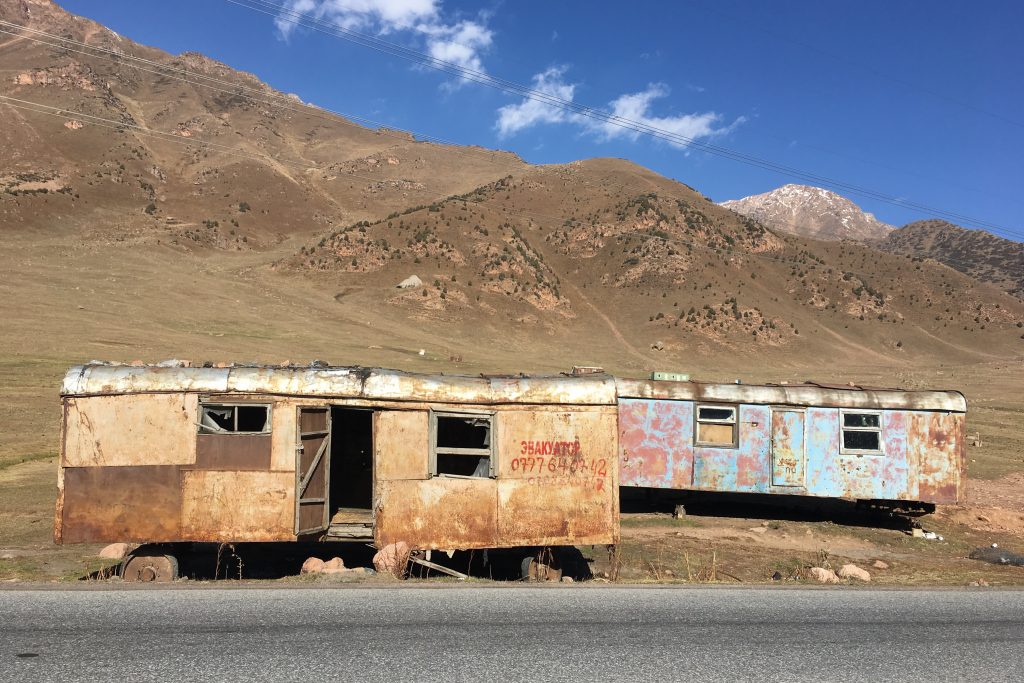
This feeling has been particularly strong since crossing into Kyrgyzstan. That same road tirelessly stretching ahead, finally having left behind arid landscapes and coming back to life through green-carpeted mountains, red rocks, and turquoise waters.

We hadn’t paid much attention to planning our route through Kyrgyzstan. As focused as we were on surviving the almighty Pamir Highway and the Himalayas, we completely missed a chance to maximize our touring power and failed to plan ahead. Nevertheless, the M41 didn’t stop throwing at us a gorgeous view after another.
Upon leaving Osh (the officious end of the Pamir Highway for every cycle tourers on Earth) the traffic wasn’t the friendliest, but soon enough we were in the countryside. On beautifully asphalted roads – never giving it for granted again! – , we would roll and climb through the Kyrgyz countryside, people as friendly as ever without being overly excited as the Uzbeks and the Tajiks (other cyclists will know what we are talking about!). Hurds of horses roaming freely, sheeps rapidly strutting their fatty bottoms to make space to trucks on the road, chasing dogs, all the honey/pumpkin/melon fruit vendors.
And, more than anything else, the orange and purple colors of the trees and the most beautiful Autumn of my life.
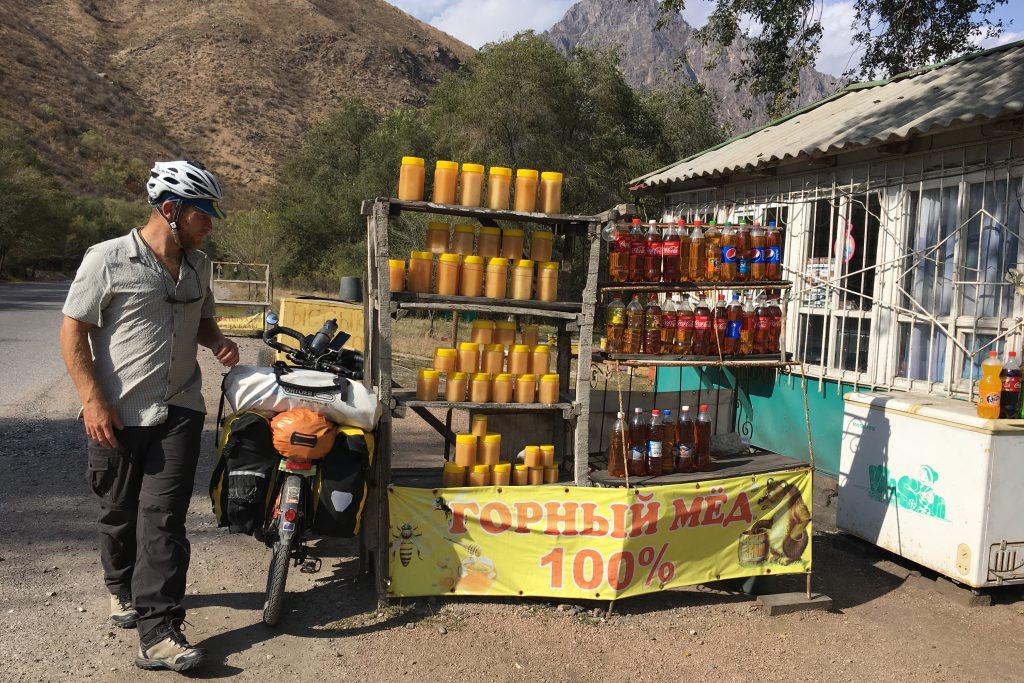

Indeed, we didn’t know much about Kyrgyzstan and, for once, I kind of regretted not doing the meticulous research I have always been so accustomed to doing before any journey; we simply stuck to the most direct route to the capital, Bishkek, unaware of how much of the Eastern Kyrgyz countryside beauty we were missing. All we knew was that we had a few tough mountain passes to climb but we hadn’t done much planning.
The first climb was a long 70km ascent, with the last bit being awfully challenging. Thinking I was in my own right to catch a lift (I had already cycled the Pamir Highway after all!) I hitchhiked a lift to the summit. Ross, however, was there for the pain and decided to pedal all the way up. I waited for him at the snowy top, cooling down really quickly (huge mistake!) and by the time Ross arrived, we were both proved and decided to descend from the high altitude to warmer temperatures.
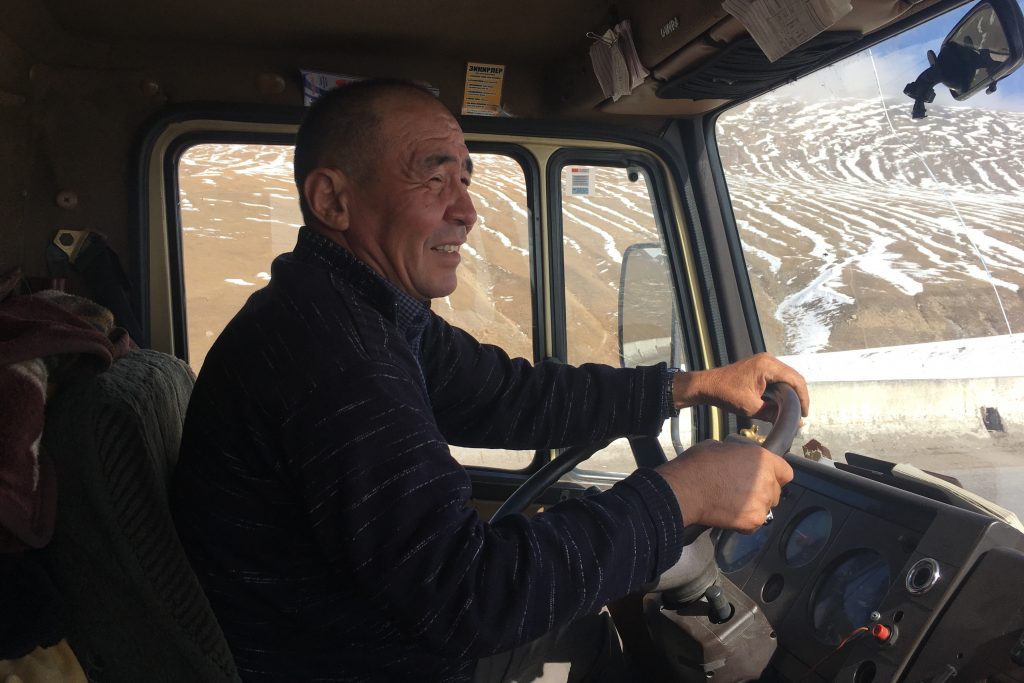
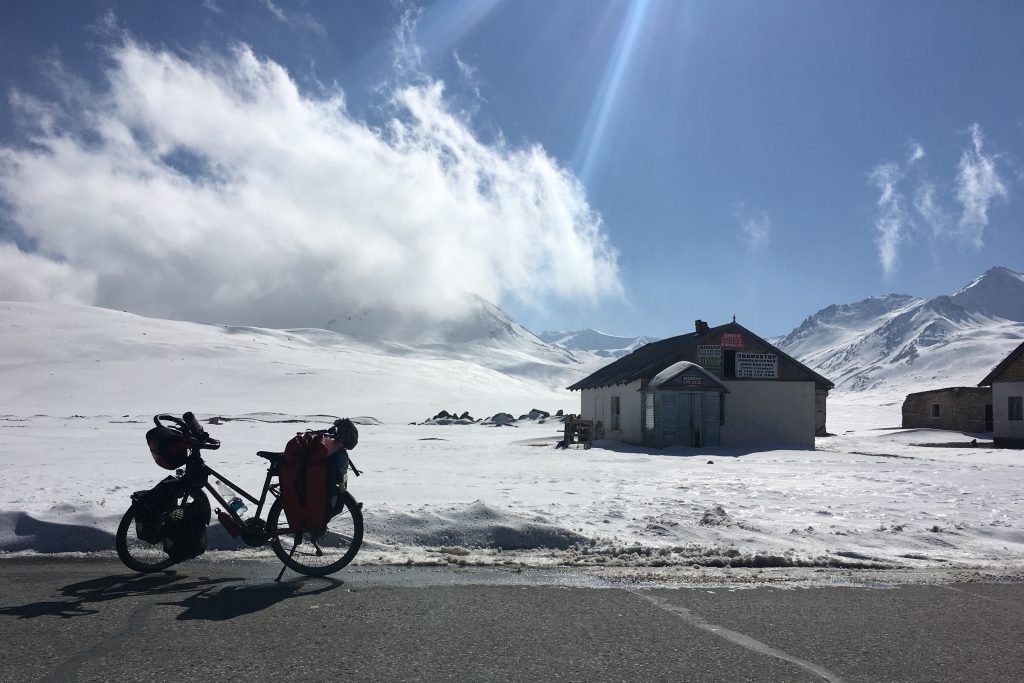
Over the days following that straining climb, the weather changed for the worse. A snowstorm was clearly going to hit us hard if we decided to climb the next pass – at 3600m of altitude. Prioritising our safety, we rolled our bikes into the nearest ex-Soviet looking gas station and befriended one of the many lorry drivers crossing these crazy parts of the world. He would save us the last 100km straight into Bishkek, the capital.
And so we hit the road once again, this time from the comfort of a lorry. As we had predicted, the weather quickly deteriorated and, by the time we reached the summit, the road had completely disappeared. The wind was blowing wild, lifting the snow into the air and hampering the visibility. Our track proceeded slowly through many lorries stranded on the steep hairpins, their wheels spinning in the slush, and unable to move forward. Life on such high altitudes was already hard enough and the fast-approaching winter didn’t make things any easier. At that stage, summer was definitely calling for us.
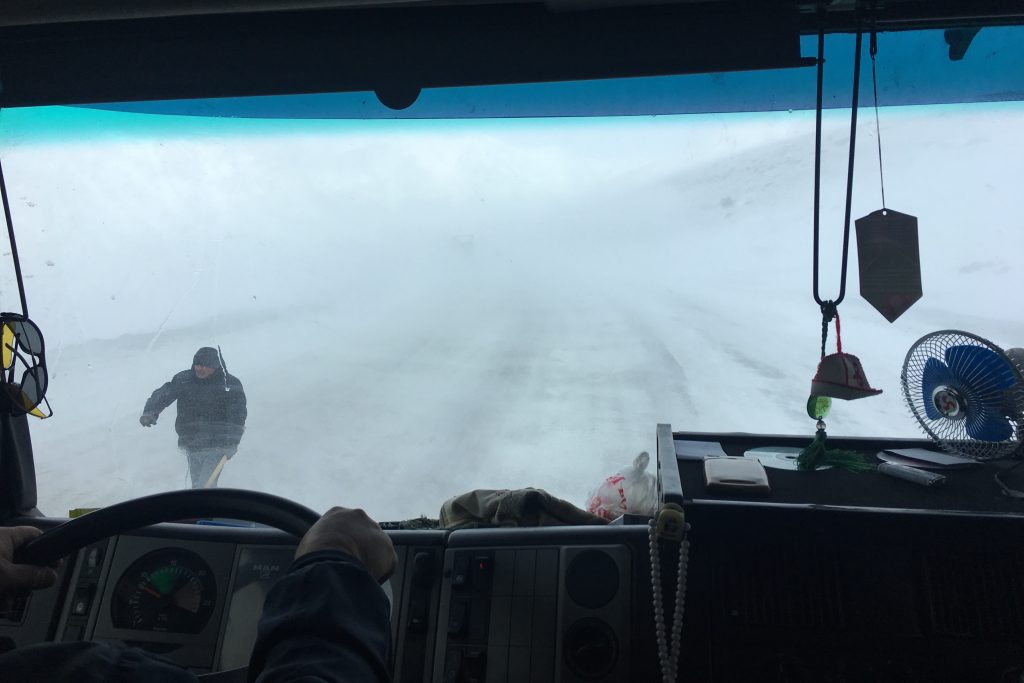
On the other side of the storm, there was Bishkek, capital of Kyrgyzstan.
It felt like a relief to be back into civilization, and Bishkek did not disappoint in its offering of international food and craft beers! But the life of a cycle tourer is never hidle and after a few days, we were ready to cycle the last stretch of our Central Asian adventure.
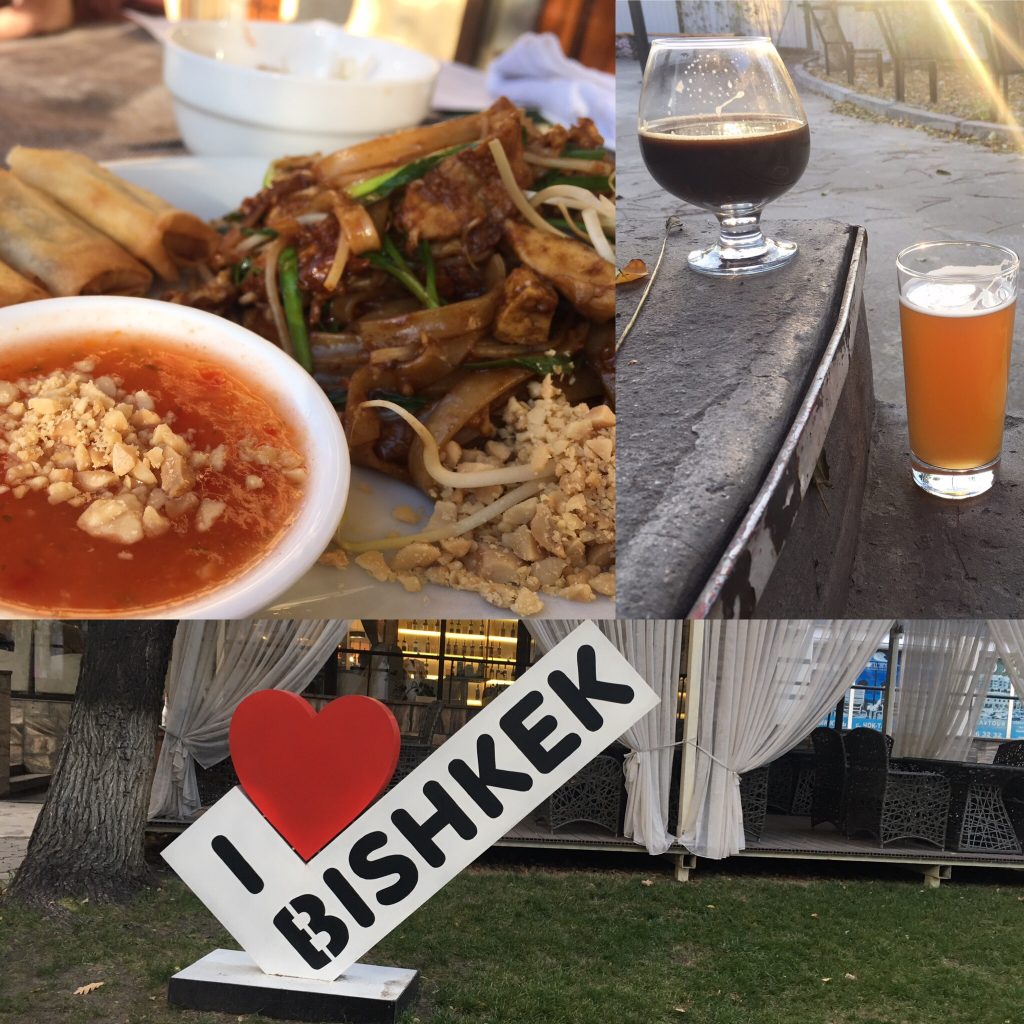
Almost 300 km separated Bishkek, Kyrgyzstan, from Almaty, Kazakhstan.
We were aware of the corrupt police system in Kazakhstan and their tendency to “fine” international cyclists for all sorts of random “reasons” (of course, those fines needed to be paid on the spot!). So we decided to dush through the border and pedal that distance over three days.
Our border crossing from Kyrgyzstan into Kazakhstan was one of a kind. Funnily enough, there was a full-on TV crew filming for a program that wanted to be a lot like the UK version of “Border Security”. The guards were in a particularly friendly mood and loving the attention. And we loved being able to go through with no issues whatsoever!
On our way to Almaty, we had a few more mild hills and a sample of the infamous Kazakh steppe, until we finally rolled into the traffic of the ex-capital. That truly felt like being in an episode of Back to the Future, and the apparent European vibe of the city was quite disarming and surreal. The high buildings of the financial center and shopping malls heavily occupied the skyline. People were dressed and behaved like Westerners, wealth was evident, with commodity prices easily comparable to the ones in London. We settled for a few days at the lovely European Backpacker Hostel, a little oasis in an urban jungle we had forgotten how to survive. It was really good to have a safe place where to calmly change our mindset from “the next little village is in 60km” to “the next single-origin espresso place is around the corner”.
It certainly was a very funny way to end our Central Asian adventure. The intimacy and the connection we had in the mountains had been replaced by the hustle of the big city life.
But while the frantic traffic kept on going on the main road just around the corner, from our windows we could still see the distant snowy tops. Hard to believe we had been there. Even harder to believe we had made it.
With a sigh of relief and satisfaction, we closed the windows and hold on to that special treasure in our hearts. What else could we possibly want?
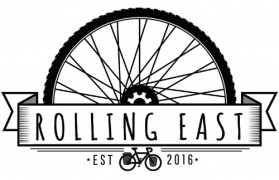

Such beautiful writing Alessia Cascione!
A lovely, lovely story.
Really enjoyed this. Thank you for taking the time to write and share. On my wish list definitely!